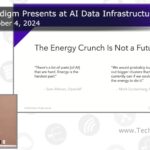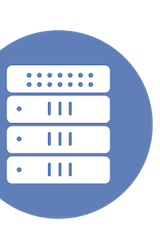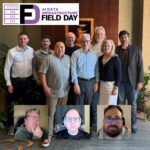|
|

Manzur Rahman presented for Solidigm at AIDIFD1 |
This video is part of the appearance, “Solidigm Presents at AI Data Infrastructure Field Day 1“. It was recorded as part of AI Data Infrastructure Field Day 1 at 10:30-12:30 on October 3, 2024.
Watch on YouTube
Watch on Vimeo
In the presentation by Solidigm at AI Data Infrastructure Field Day 1, Manzur Rahman emphasized the critical issue of energy consumption in AI and data infrastructure. He referenced quotes from industry leaders like Sam Altman and Mark Zuckerberg, highlighting the significant challenge energy poses in scaling AI operations. Rahman discussed findings from white papers by Meta and Microsoft Azure, which revealed that a substantial portion of energy consumption in data centers is attributed to hard disk drives (HDDs). Specifically, Meta’s AI recommendation engine and Microsoft’s cloud services found that HDDs consumed 35% and 33% of total operational energy, respectively. This underscores the need for more energy-efficient storage solutions to manage the growing data demands.
Rahman then explored various use cases and the increasing need for network-attached storage (NAS) in AI applications. He noted that data is growing exponentially, with different modalities like text, audio, and video contributing to the data deluge. For instance, hyper-scale large language models (LLMs) and large video models (LVMs) require massive amounts of storage, ranging from 1.3 petabytes to 32 petabytes per GPU rack. The trend towards synthetic data and data repatriation is further driving the demand for NAS. Solidigm’s model for a 50-megawatt data center demonstrated that using QLC (Quad-Level Cell) storage instead of traditional HDDs and TLC (Triple-Level Cell) storage could significantly reduce energy consumption and increase the number of GPU racks that can be supported.
The presentation concluded with a comparison of different storage configurations, showing that QLC storage offers substantial energy savings and space efficiency. For example, a DGX H100 rack with QLC storage consumed only 6.9 kilowatts compared to 32 kilowatts for a setup with TLC and HDDs. This translates to 4x fewer storage racks, 80% less storage power, and 50% more DGX plus NAS racks in a 50-megawatt data center. Rahman also addressed concerns about heat generation and longevity, noting that while QLC may generate more heat and have fewer P/E cycles compared to TLC, the overall energy efficiency and performance benefits make it a viable solution for modern data centers. Solidigm’s high-density drives, such as the P-5520 and QLCP-P-5430, were highlighted as effective in reducing rack space and power consumption, further supporting the case for transitioning to more energy-efficient storage technologies.
Personnel: Manzur Rahman








